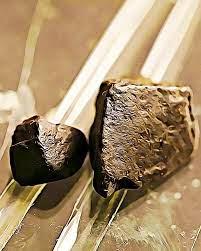
1 minute read
FACT: Network of the Xalisco Boys
The story of how Mexican black tar heroinmadeitswaytotheUnitedStates has been well documented by L. A. Time’s reporter Sam Quinones in The HeroinRoad,athree-partseries.
Sugar cane farm boys from Xalisco, in the Pacific state of Nayarit, Mexico, flocked to the U.S., lured by the opportunity to make money to send home to their families. They would become dealers, of sorts, working for Xalisco drug bosses, purveyors of Mexican black tar heroin. But that’s more toward the end of the story. How the network came to be didn’t just happenovernight.
An unique business model involves selling to white middle class, working clientele- and not to African Americans or Latinos
Mexican black tar heroin is marketed as a cheap and easy substitute for OxyContin, Percocet and other prescription painkillers.

The 2009 Drug Treat Assessment issued by the US Justice Department says Mexican heroin production reached an estimated 18 metric tons in 2007. It accounts for two-thirds of the heroun market in this country.
The idea was cooked up in the early 1990s by two men serving time in the Northern Nevada Correctional Center. The crimes for which they were incarcerated–drugoffenses.Oneofthe men, who called himself Max, knew aboutherointradeintheU.S.,andsaid his partner, a native of Xalisco, had access to both workers and black tar back in his hometown. Xalisco County (the town of Xalisco and a number of other villages) is made up of a lot of ranchos and small villages, each ferociously independent. Thus, there could be no single person controlling a cartel.
Arizona as their staging base of operations.Networkshavesprungupin, among other places, Boise, Idaho; Indianapolis, Indiana; Nashville, Tennessee;Reno,Nevada;SaltLakeCity, Utah;andMyrtleBeach,SouthCarolina. From there, the sticky stuff (black tar heroin is dark and sticky, hence the name) wends its way into the suburbs andsmalltownsofAmerica.

